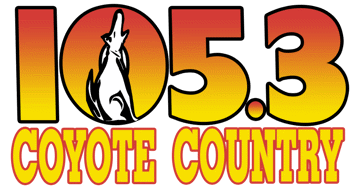Rural Mainstreet Economy Soars to Highest Level in 15 Months

November 2024 Survey Results at a Glance:
*The Rural Mainstreet Index climbed to its highest level in 15 months.
*For the sixth time in the past seven months, farmland prices sank.
*On average, bank CEOs expect farmland prices to decline 2.7% over the next 12 months.
*Farm equipment sales dropped for the 16th straight month.
*Approximately 64.3% of bankers recommended that the Federal Reserve make no change to short-term interest rates at its December meeting. The remaining 35.7% advocated a 0.25% reduction.
*According to trade data from the International Trade Association, regional exports of agriculture goods and livestock for 2024 year-to-date climbed to $8.73 billion from $8.64 billion from the same period in 2023, for growth of 1.1%.
OMAHA, Neb. (Nov. 21, 2024) — For the first time since July 2023, the overall Rural Mainstreet Index (RMI) rose above growth neutral, according to the November survey of bank CEOs in rural areas of a 10-state region dependent on agriculture and/or energy.
Overall: The region’s overall reading for November climbed to a soft 50.2 from October’s very weak 35.2. It was the highest reading since July of last year. The index ranges between 0 and 100, with a reading of 50.0 representing growth neutral.
“Yields have been healthy across the region and have offset some of the weakness in farm commodity prices. Likewise, lower fuel costs and lower short-term interest boosted the modest improvement in farm conditions for the month. Even so, more than eight of 10 bankers see lower ag commodity prices as the greatest threat to the farmer,” said Ernie Goss, PhD, Jack A. MacAllister Chair in Regional Economics at Creighton University’s Heider College of Business.
James Brown, CEO of Hardin County Bank in Eldora, Iowa, said, “Good yields are so far offsetting lower commodity prices. Most ag borrowers are just breaking even unless they did some good marketing earlier.”
Other comments from bankers for November:
Terry Engelken, Vice President of Washington State Bank in Washington, Iowa, reported that “Corn and soybean yields were excellent in our area.”
Jim Eckert, CEO of Anchor State Bank in Anchor, Illinois, said, “Harvest is complete in our area, except for the usual stragglers. Yields were the same or better than 2023, but depressed commodity prices will generate some carryover debt for some operators.”
Larry Winum, CEO of Glenwood State Bank, said, “Now that the republicans have control of the White House and Congress, let's see if they can get serious about a tiered regulatory program for the banking system and a serious discussion and plan to balance the federal budget and reduce the federal debt. It's time to quit talking about it and actually put a plan in place.”
Casey Regan, CEO of Premier Bank Minnesota, reported that “The regulation relief anticipated under the new Trump Administration contributes to a renewed optimism in the economic environment, particularly in the area of banking. Had the opposite election result occurred, the negative impacts on the financial services industry via legislation through regulation would have been disastrous to the economy.”
Farming and ranch land prices: For the sixth time in the past seven months, farmland prices sank. However, the region’s farmland index improved to a weak 44.4 from October’s six-year low of 38.5. “Elevated interest rates and higher input costs, along with below break-even grain prices, have significantly reduced farmer demand for ag land,” said Goss.
On average, bank CEOs expect farmland prices to decline by 2.7% over the next 12 months.
Jeff Bonnett, CEO of Havana National Bank in Havana, Illinois said, “The pending FARM Act (H.R. 10045 - Farmer Assistance & Revenue Mitigation Act), if approved by Congress, would provide a huge boost to the ag and rural economy in our market area. With per acre estimates of about $100 for corn and almost $50 for soybeans, this targeted relief to farmers that suffered due to extremely low commodity prices (below the cost of production) for their 2024 harvest would at least recover part of their operating losses. Our bank is optimistic that this much needed legislation will pass.”
According to trade data from the International Trade Association (ITA), regional exports of agriculture goods and livestock for 2024 year-to-date rose to $8.73 billion from $8.64 billion from the same period in 2023 for a 1.1% gain.
Farm equipment sales: The farm equipment sales index slumped to 14.6, its lowest level since October 2016, and was down from 18.8 last month. “This is the 16th straight month that the index has fallen below growth neutral. High borrowing costs, tighter credit conditions and weak farm commodity prices are having a negative impact on the purchases of farm equipment,” said Goss.
Banking: The November loan volume index declined to a solid 58.9 from a strong 73.1. The checking deposit index fell to 59.3 from 63.7 in October. The index for certificates of deposits (CDs) and other savings instruments sank to 53.7 from 63.5 in October. The Federal Reserve’s higher interest rate policies have boosted CD purchases above growth neutral for 24 straight months.
Hiring: The new hiring index for November was unchanged from October’s 50.0.
Confidence: Rural bankers remain pessimistic about economic growth for their area over the next six months. The November confidence index increased to a weak 46.4, its highest level since March 2022, and up from October’s 29.6. “Weak agriculture commodity prices and negative farm cash flow, combined with downturns in farm equipment sales over the past several months, continued to place banker confidence below growth neutral,” said Goss.
Home and retail sales: Home sales sank to 42.6 from October’s weak 46.3. Likewise, retail sales in the region were very weak with a November reading of 42.0, up from October’s even weaker 36.0.
“High consumer and farmer debt, elevated interest rates and weaker farm income are cutting into retail sales for the Rural Mainstreet Economy,” said Goss.
The survey represents an early snapshot of the economy of rural agriculturally- and energy-dependent portions of the nation. The Rural Mainstreet Index is a unique index that covers 10 regional states, focusing on approximately 200 rural communities with an average population of 1,300. The index provides the most current real-time analysis of the rural economy. Goss and Bill McQuillan, former Chairman of the Independent Community Banks of America, created the monthly economic survey and launched it in January 2006.
Below are the state reports:
Colorado: The state’s Rural Mainstreet Index (RMI) for November rose to 60.3 from 51.6 in October. The farmland and ranchland price index for November expanded to 57.5 from 52.3 in October. The state’s new hiring index slipped to 65.6 from October’s 65.9. According to trade data from the International Trade Association (ITA), regional exports of agriculture goods and livestock for 2024 year-to-date rose to $295.1 million from $127.7 million from the same period in 2023 or a 131.0% gain.
Illinois: The state’s November Rural Mainstreet Index (RMI) jumped to 54.3 from 38.1 in October. The farmland price index increased to 42.4 from 38.8 in October. The state’s new hiring index climbed to 49.1 from 45.1 in October. According to trade data from the ITA, regional exports of agriculture goods and livestock for 2024 year-to-date sank to $3.2 billion from $3.3 billion from the same period in 2023 or a 1.8% reduction.
Iowa: November’s RMI for the state increased to 49.6 from 37.1 in October. Iowa’s farmland price index for November rose to 41.1 from 38.6 in October. Iowa’s new hiring index for November fell to 49.3 from 52.4 in October. According to trade data from the ITA, regional exports of agriculture goods and livestock for 2024 year-to-date sank to $1.1 billion from $1.2 billion from the same period in 2023 or a 2.3% reduction.
Kansas: The Kansas RMI for November climbed to 45.3 from October’s 33.4. The state’s farmland price index increased to 42.3 from 37.5 in October. The new hiring index for Kansas expanded to 47.9 from 47.6 in October. According to trade data from the ITA, regional exports of agriculture goods and livestock for 2024 year-to-date rose to $979.4 million from $935.6 million from the same period in 2023 or a 4.7% gain.
Minnesota: The November RMI for Minnesota climbed to 71.2 from October’s 49.8. Minnesota’s farmland price index jumped to 50.5 from 42.1. The new hiring index for November dipped to 51.2 from 53.3 in October. According to trade data from the ITA, regional exports of agriculture goods and livestock for 2024 year-to-date fell to $833.0 million from $919.2 million from the same period in 2023 or a 9.4% reduction.
Missouri: The state’s November RMI rose to 57.7 from October’s 52.4. The farmland price index for November fell to 53.2 from 57.2 last month. The state’s new hiring gauge for November dropped to 56.7 from 71.9 in October. According to trade data from the ITA, regional exports of agriculture goods and livestock for 2024 year-to-date sank to $687.6 million from $884.9 million from the same period in 2023 or a 22.3% reduction.
Nebraska: The Nebraska Rural Mainstreet Index for November increased to 44.4 from October’s 33.5. The state’s farmland price index for November rose to 42.9 from 36.9 in October. Nebraska’s November new hiring index increased to 47.9 from 45.8 in October. According to trade data from the ITA, regional exports of agriculture goods and livestock for 2024 year-to-date expanded to $622.4 million from $475.9 million from the same period in 2023 or a 30.8% gain.
North Dakota: North Dakota’s RMI for November rose to 55.3 from October’s 39.2. The state’s farmland price index increased to 46.0 from 39.3 in October. The state’s new hiring index rose to 51.3 in November from 49.8 in October. According to trade data from the ITA, regional exports of agriculture goods and livestock for 2024 year-to-date rose to $807.7 million from $716.5 million from the same period in 2023 or a 12.7% gain.
South Dakota: The November RMI expanded to 47.1 from October’s 41.8. The state’s farmland price index climbed to 43.7 from 39.9 in October. South Dakota’s October new hiring index slipped to 48.5 from October’s 50.5. According to trade data from the ITA, regional exports of agriculture goods and livestock for 2024 year-to-date climbed to $120.9 million from $105.8 million from the same period in 2023 or a 14.3% gain.
Wyoming: The November RMI for Wyoming increased to 39.4 from 34.2 in October. The November farmland and ranchland price index improved to 41.5 from October’s 33.3. Wyoming’s new hiring index increased to 45.8 from 42.1 in October. According to trade data from the ITA, regional exports of agriculture goods and livestock for 2024 year-to-date sank to $2.5 million from $4.0 million from the same period in 2023 or a 37.1% reduction.
